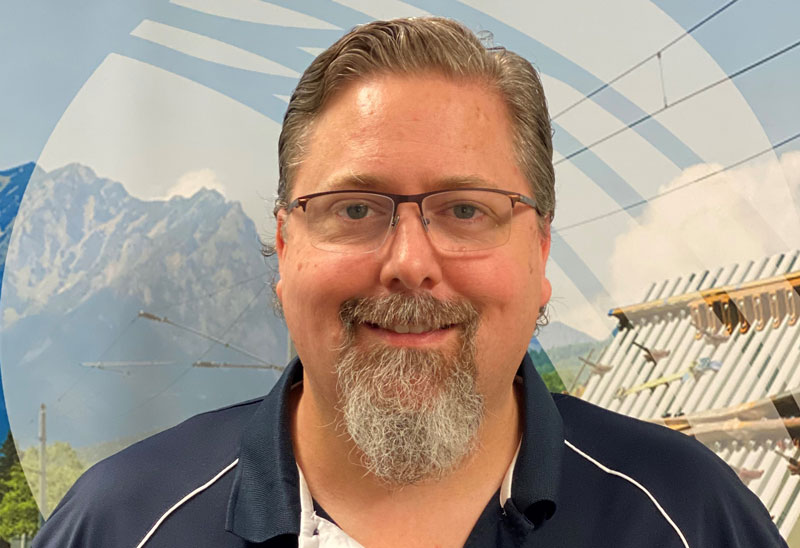Bearing the movement of vehicles as they transfer between tracks means that rail turnouts endure high dynamic forces and often wear out quickly. For this reason, the cost of maintaining a turnout throughout its lifecycle can be significant – sometimes exceeding the price of acquisition.
However, as Daniel Cuddy, Engineering Manager at voestalpine Railway Systems Australia points out, these lifecycle costs pale in comparison to those of turnout failures.
For busier rail networks, a defective turnout can cost up to $1 million per hour in operational downtime – a figure that will inevitably rise in the years ahead, as patronage continues to grow. Last year, Australia’s rail patronage almost doubled at 40 percent, showing strong signs of recovery from the sector’s COVID-induced downturn.
“It’s really important to invest in quality maintenance options and do everything possible to protect this well-worn piece of equipment – particularly as speeds get higher, loads get heavier, and trains get longer,” Daniel told Informa Connect.
“In rail, as with any industry, there is often pressure to keep costs down. But when it comes to turnout maintenance, doing the bear minimum – or opting for cheaper options – is often a false economy, given the significant price tag associated with failures.”
So, what makes for a quality maintenance option? Daniel shares some insights ahead of his speech at the Rail Turnouts Conference.
Intelligent design
Pre-empting the wheel-rail relationship and profile-machining the rail before it is installed builds on the traditional approach of grinding this profile in track. This approach creates a more favourable wear pattern on the rail with fewer defects and less metal flow. It also ensures optimal track performance, regardless of the wheel profile, track configuration, track gauge, or flangeway width.
“On certain crossings or products there is a very complex interaction between the wheel and the rail and this should be analysed to ensure good running condition and avoid derailment,” Daniel said.
“When you put components onto the track without adjusting them beforehand, trains often hit things they shouldn’t and incur unnecessary damage to the track. Making these adjustments early in the design phase means extreme changes don’t need to be made later on – i.e., through physical grinding.
“For example, instead of grinding 6 millimetres from the nose to stop it getting hit by the train, you could simply raise the guard rail a couple of millimetres, or adjust the gauge by the same amount. This is a much more cost-effective approach.”
Data-backed quality
Behind the scenes of intelligent design, data simulations and scanning can ensure quality. Dynamic Multi-body Simulation enables design changes and innovations to be simulated accurately and quantified against expectations. These simulations are then verified against real-world conditions to improve accuracy.
“With safety and reliability at stake there is no room for guessing. Once a turnout is installed in track, data – through a comprehensive measurement campaign – can be used to refine the model. Subsequent design changes can then be simulated accurately” Daniel said.
Meanwhile, scanning tools can generate before and after comparisons to remedy worn out components.
“Comparing damage against defined wear limits allows operators to quantify the works and provide clear evidence of meeting regulatory acceptance criteria,” he added.
Climate resilience
Ensuring the quality of ballast beneath turnouts can also give them resilience against extreme weather. At the design phase, this might involve the inclusion of under sleeper pads.
“A quality base can support the bearers and steelwork, preventing degradation of the turnout and prolonging its life,” Daniel said.
Newer signalling and locking equipment with IP67 ratings are also recommended, given the increased frequency of flooding events.
“Repairing or replacing this equipment when submerged can be an expensive and difficult logistical exercise – so ensuring their resilience to this type of scenario is sensible,” Daniel said.
More about voestalpine
voestalpine Railway Systems Australia is the leading provider of smart system solutions for railway infrastructure, with a range of products and services for rail, turnouts, signalling and monitoring systems. Each product and service enables the safe, environmentally-friendly and efficient transportation of people and goods around the world. To ensure the highest availability of tracks at the lowest life cycle costs, it offers PERFORMANCE ON TRACK ®.
Sustainable Customer Relationships are voestalpine’s driving force for developing tailor made smart solutions. Its knowledge of track products and the interactions of products within systems is unique in the industry and the basis for innovative and digitised customer solutions.
voestalpine cares for its people and their development. It is proud of its teams enthusiasm and passion which is the foundation of voestalpine’s success. voestalpine assumes responsibility for the environment and values long term relationships as a reliable partner for customers and suppliers. It continuously challenges itself to develop products and solutions that befit ever-growing requirements from the market.
voestalpine is proudly sponsoring Informa’s Connect’s Rail Turnouts Conference for the second year running, where Daniel Cuddy will share further details of its intelligent design solutions.
Joining Daniel on stage are senior representatives from the likes of Rio Tinto, BHP and Yarra Trams.
